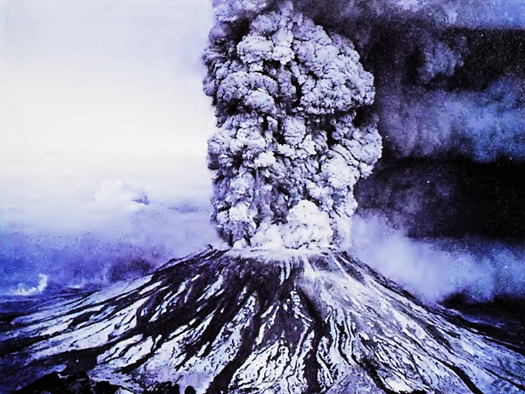Subduction. Continental Margins
When an oceanic plate collides with another plate, the denser oceanic plate is subducted into the mantle. The oceanic plate is closer to the density of the asthenosphere and so is more easily forced into the mantle. The overriding plate edge scrapes, folds, and slices off seafloor sediments, and the descending plate carries some sediments down into the subduction zones. The subduction process depresses the sea floor, forming a trench, and in some cases the amount of sediment carried with the subducting plate and the loose materials accumulated on the sea floor fill the trench, masking its appearance.
When the heat of the mantle is great enough, it melts the outer edges of the down-turned plate, including the wet sediments it is carrying. This molten material, including a significant amount of water boiled out of the subducted sediments and oceanic crust, mixes with the surrounding mantle material, lowering its melting point sufficiently to cause it to partially melt as well.
The resulting assemblage of molten rock has a relatively low density and rises to the surface, where it results in the formation of belts of volcanoes adjacent to the trench. Such volcanic action is distinctly different from the volcanic action associated with spreading centers. Volcanic eruptions of recycled oceanic crust and silica-rich, water-saturated sediments are explosive, producing large amounts of ash, gas, and steam. When volcanoes produced in this way are separated from a continent they often form island arc systems (fig. 2.24a). Island arcs may also be compressed against a landmass, or volcanoes may arise along the border of a landmass.

Fig. 2.24. Subduction processes produce (a) island arc systems with volcanic activity and (b) additions to a landmass and explosive volcanoes
Volcanic action of this type forms andesite volcanoes; named for the type of silicic magma erupted. Andesite volcanoes are common to the Andes and the Cascade Mountains of the Pacific Northwest, including Mount St. Helens (fig. 2.25). Andesite volcanoes form the island arc chains of the Aleutians, Japan, the Philippines, and Malaysia. By contrast, island formation at hot spots (section 2.5) is more often a quiet, smooth outpouring of thick, flowing magma, as in the Icelandic and Hawaiian volcanoes.

Fig. 2.25. Mount St. Helens erupted violently on May 18, 1980. The mountain lost nearly 4.1 cubic kilometers from its once symmetrical summit, reducing its elevation from 2950 meters to 2550 meters. The force of the lateral blast blew down forests over a 594-square'kilometer area. Huge mud floes of glacial meltwater and ash flowed down the mountain
When continents collide at a subduction zone, the landmasses resist subduction because their density is lower than the mantle density. Instead, the colliding edges are crumpled and deformed, and continental material from one plate may override the continental material of the other plate, producing a large thickness of continent. In this situation the sediments and less-dense crustal components of the intervening sea floor may be compressed together and piled upward.
The Himalayas and the Alps in part are examples of such mountain ranges. This process explains why marine sediments and fossils, including the limestone remains of coral reefs, are found on the summits of peaks in these ranges. This scenario is illustrated in figure 2.24b.
Continental Margins. When a continent rifts and moves away from a spreading center, the continental margin closest to the mid-ocean ridge is known as a passive, or trailing, margin. Basalt-type rock of the sea floor adheres to the trailing margin and the aging continent edge slowly subsides as the spreading lithosphere thickens, cools, and contracts. A trailing margin is eroded by the waves and currents; it may also be modified by shell or coral reefs. These continental margins accumulate an orderly series of sediment deposits eroded from the continents, to a depth of about 3 km (1.8 mi).
Currents move the sediments downslope to the sea floor, where thick deposits of graded sediments build on top of the oceanic crust. Old trailing margins are not greatly modified by tectonic processes once they are displaced from the spreading center. These margins are often broad and shallow and have thick sedimentary deposits, as along the eastern coast of the United States.
The edge of the overriding plate at a trench or subduction zone is an active, or leading, margin. If a landmass or island arc system is present, the leading continental margins are modified by tectonic processes. Where oceanic crust descends beneath continental crust, the active continental margin is often narrow and steep because of abrasion along the edge of the landmass; this tectonic modification is often accompanied by uplift and folding of the land along the margin.
The coasts of Washington, Oregon, and Chile are examples of active margins. Because sediments moving from the land into the coastal ocean move directly downslope into deeper water, into trenches, or into adjacent ocean basins, thick sediment deposits do not accumulate to form broad shallow shelves at leading margins.
Date added: 2023-11-08; views: 564;
